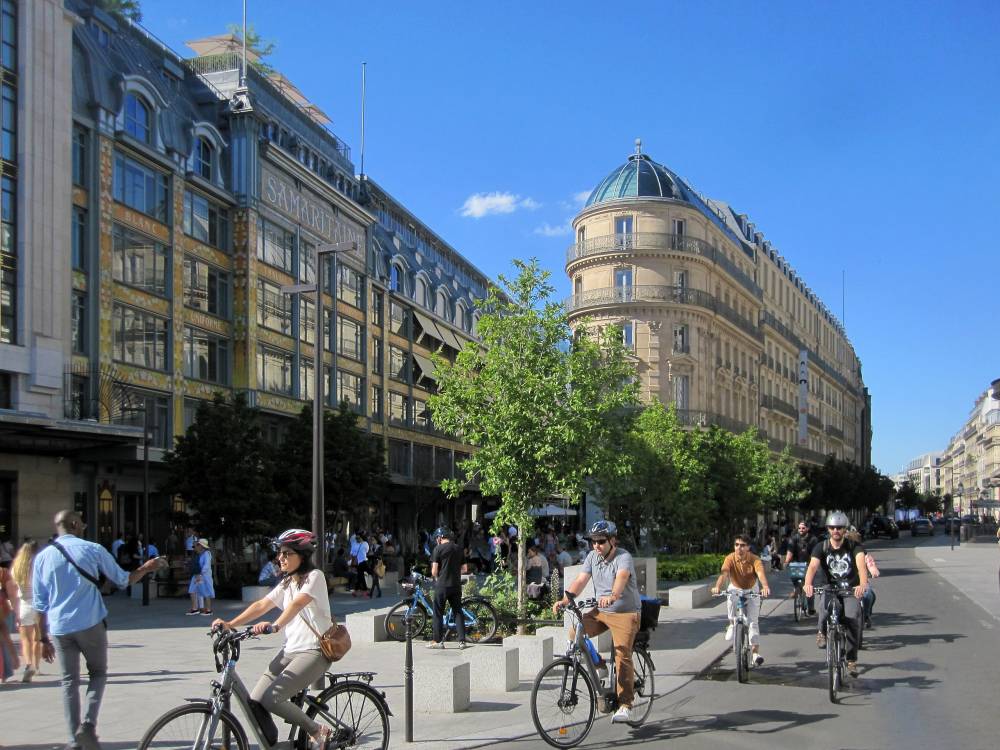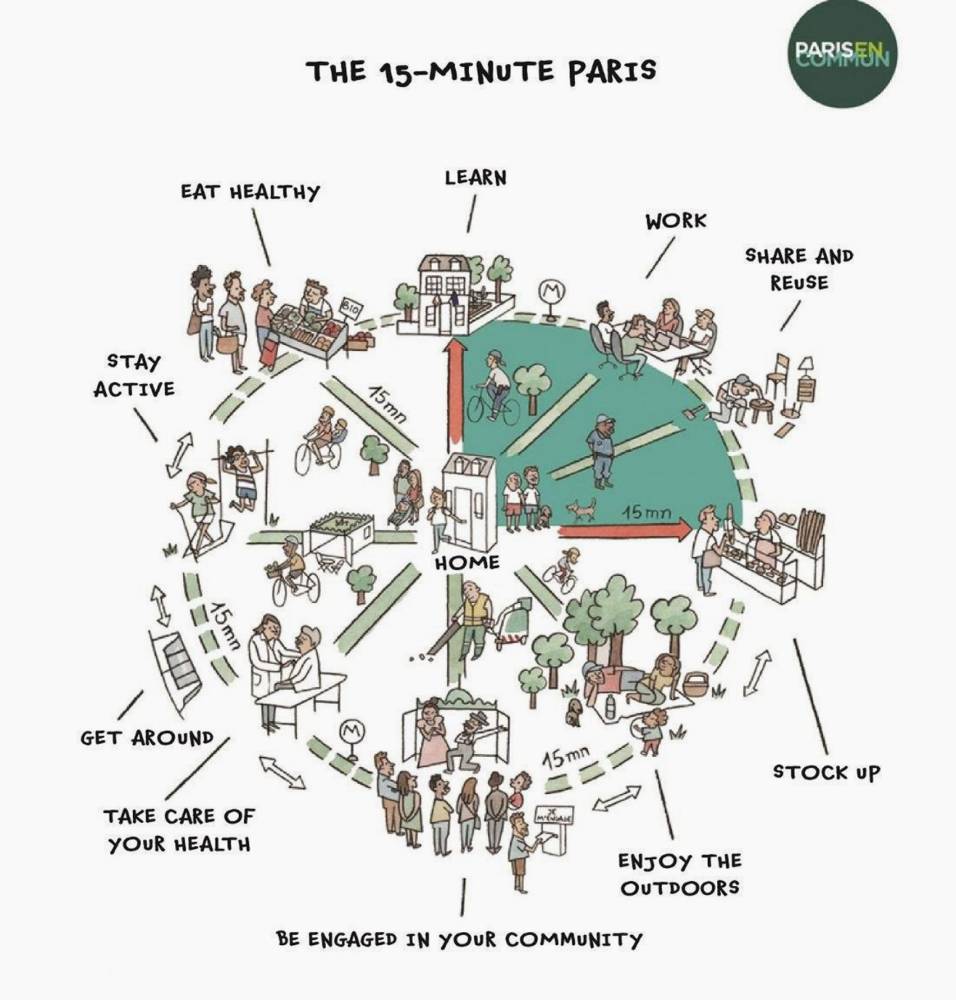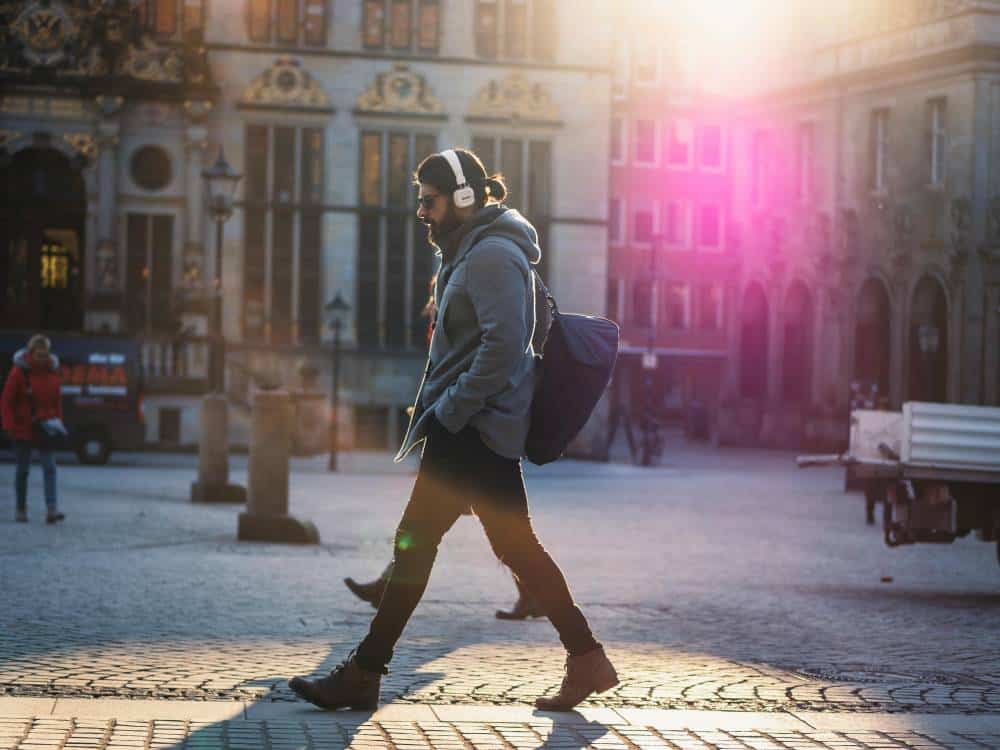The success of the 15-minute city model

Paris, France is at the forefront of the 15-Minute City Movement, adapting sustainable measurements to make the city more liveable and accessible.
What is the ideal city?
For Sorbonne professor Carlos Moreno, the ideal city is where you can get your necessities within a 15-minute travel period from your home. Stores, schools, hospitals and other necessary institutions should be easily accessible via walking, biking and other sustainable ways to travel.
Simply called the “15-minute city”, this concept was first introduced in 2016 in Paris, France and has since become an urban development guide for many cities across the world. The concept, however, is not without its detractors and critics. After all, how sure are we that it really works?
Eight years into its launch, let’s take a look at actual figures to see its results. The following data shows how the “15-minute city” translated into numbers in recent years. While not entirely tied to the concept, these figures show how effective improved accessibility is, not only in creating sustainable cities but also in healing the world in the long run.
Paris, France
Paris transformed three of its districts into 15-minute city models from 2017 to 2019.

The 15-minute City Concept was developed by Professor Carlos Moreno and aims to improve accessibility, liveability, sustainability and housing affordability for all.
Initial changes include opening schoolyards on weekends, making single-use buildings into mixed-use facilities, changing streets to become pedestrian-friendly, and improving affordability of local commercial spaces. Paris has since implemented more large-scale changes, such as creating permanent bike freeways, decentralizing community decision-making, and improving participatory budgeting.
In 2021, Paris reported the following improvements to the World Resource Institute-Ross Center in its application for the 2021-2022 Prize for Cities. Over 1,000 km of new bike lanes were created; seven new urban forests and one urban park were developed; 12 new pedestrian squares were opened; and 180 pedestrian-friendly schoolyards and streets were made more accessible. Given all these figures, how exactly did the 15-minute city concept improve Paris?
According to Moreno, “Paris has undergone a profound transformation into an exceptionally mobile and environmentally friendly city.”
With less cars on the streets, more public areas for families, and more local businesses opening up, the city is seeing an improvement in its offered services. Citizens and tourists are benefitting from the changes, enabling the city to bounce back from the COVID-19 economic slump and strengthen its community resilience.
Melbourne, Australia
Australians formulated their own version of idealism: the 20-minute neighborhood.
Developed as part of the government’s Plan Melbourne 2017-2050, the 20-minute neighborhood is similar to the 15-minute city concept except it is more forgiving with its extra five minutes of travel consideration. The difference is based on research that shows that most people are willing to walk a maximum of 20 minutes to get their necessities on a daily basis.

20-minute Neighborhoods, a concept promoted by the Victorian government for Melbourne, Australia, is founded on principles similar to the 15-Minute City.
The 20-minute neighborhood aims for six hallmarks: accessible, supportive of local economies, convenient, climate-resilient, full of quality public spaces, and aptly dense in terms of housing. Pilot projects were implemented in 2018 to determine areas of focus and promising measures which can be done to achieve the six hallmarks of the concept.
Studies by various organizations and scientific journals provide a glimpse on the benefits of the new urban concept.
ProjectPLAN, a study focused on residents of Melbourne and Adelaide, determined through a survey in 2022 that 20-minute cities generally helped people meet their recommended levels of exercise by encouraging walking.
In 2019, a report detailed recommendations and opportunities revealed by the pilot programs implemented in Melbourne neighborhoods. Some of these were to increase footpaths, raise pedestrian crossings, relocate bus stops and develop more bike parks. These doable changes will be implemented in the coming years to further improve accessibility.
Singapore
Singapore has also adapted some of the principles of the 15-minute city to form its long-term framework.
The 2040 Land Transport Master Plan of the country includes the creation of 20-minute towns and the 45-minute city. While these goals may seem less stringent than Paris’ vision, these have already led to effective changes.
In transportation, Singapore’s main focus is to “avoid-shift-improve.” To provide greater detail about the strategy, “avoid” means cutting short travel distance, “shift” means going for more sustainable travel modes such as bicycles, and “improve” means using hybrid, electric and other alternative power sources. These policies have seen the improvement of Singapore’s public transport, traffic systems and shortened traveling distances.
New infrastructure, such as those developed to connect the northern and southern parts of Singapore, are geared to shorten travel distances by up to 30 minutes, easing the commute of many citizens. While many still prefer private cars over public transportation and active mobility, policies are slowly changing people’s mindsets.
While all of Singapore’s urban goals have yet to be achieved, the 2040 LTMP initial projects reveal that they can be possibly obtained in the coming years.
The takeaway

The 15-Minute City is not only good for the environment, it also promotes exercise with its focus on walking and cycling.
While the 15-minute city concept is quite ambitious for any existing urban center to take on, initiatives show that even small steps toward this goal can help improve our existing communities. It may take a while before we see drastic changes, but slowly, the world is getting there.
For our part as ordinary citizens, even small changes in our travel, activities and communities can make a difference toward the improvement of our neighborhoods. Let us all work together to achieve accessible neighborhoods for all.
Sources: https://www.planning.vic.gov.au; https://prizeforcities.org; Ana M. Contardo Ayala, Karen E. Lamb, Venurs Loh, Mark Daniel, Neil T. Coffee, Laura H. Oostenbach, Lukar E. Thornton, “Do residents with a 20-min neighbourhood walk more?” Findings from ProjectPLAN, Health & Place, Volume 76, 2022, 102859, ISSN 13538292. https://doi.org/10.1016/j.healthplace.2022.102859; Manifest, Odilia Renaningtyas, and Jin Young Park. “A Case Study of a 15-Minute City Concept in Singapore’s 2040 Land Transport Master Plan: 20-Minute Towns and a 45-Minute City.” International Journal of Sustainable Transportation Technology. Vol. 5. No. 1. April 2022. 1-11. https://unijourn.com/upload/doc/submission/articleFile-1637923321026-main.pdf; DiscoA340 via Wikimedia Commons; “The 15-Minute Paris” illustration by Micael via Dezeen.com (https://www.dezeen.com/2021/10/26/15-minute-city-carlos-moreno-obel-award/); Lukas Hartmann via pexels.com; “Features of a 20-Minute Neighborhood” by the Victoria State Government